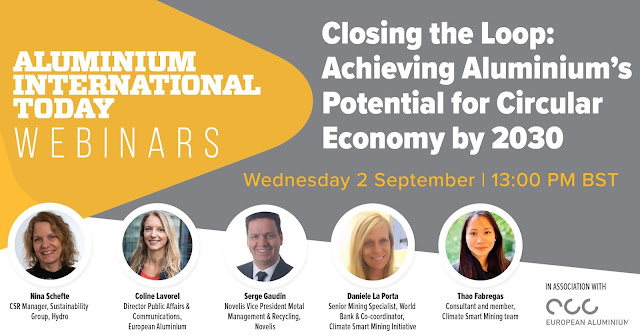VENEZUELA AND GREEN ALUMINUM PRODUCTION
VENEZUELA AND GREEN ALUMINUM
PRODUCTION
IS THE WORLD
MOSTLY PRODUCING GREEN ALUMINUM?
In the world there is strong pressure for industrial processes and their
products to meet two conditions: 1)
caring for the environment; 2)
contribution to the circular economy. Aluminum being an infinitely recyclable
material, it fully complies with the concepts of the circular economy.

As for caring for the environment, being the production of aluminum an electro-intensive process, it is ideal to use electrical energy generated from renewable sources.

When we consider all the sources, renewable and non-renewable, used to generate the electricity used by aluminum smelters, we note that 72.5% is produced with non-renewable sources, and only 27.5% with renewable energies. Therefore, the aluminum industry is still a long way from adapting to the requirement of using green energy.
HOW CAN THE WORLD PRODUCE MORE GREEN ALUMINUM?
For the world to produce
more green aluminum, the use of renewable sources must be increased, and: i) Considering that the electrolytic
process to produce primary aluminum should not have interruptions in the
electricity supply; and ii) The main
source of electricity generated by renewable sources for the production of
aluminum is hydroelectricity (of course we can use wind and solar sources, but
current energy storage costs make these sources complementary, and not the main
one).
The world should then
undertake its new projects for the production of primary aluminum in those
places that can provide hydroelectric energy in opportunity and at competitive
prices.
Such is the case of Venezuela, which has significant hydroelectric potential, with electricity generation complexes already built and operating, under construction, and others already formulated at the level of basic engineering and advances in their detailed engineering.
“Central Hidroeléctrica Simón Bolívar”
“Central Hidroeléctrica Francisco de
Miranda”
With the advantage
that this hydroelectric potential is located in the Guayana Region of
Venezuela, which also has vast bauxite reserves, and connection to a sufficient
supply of natural gas.
Hydroelectric complexes in the
Guayana Region
CONCLUSIONS
- Currently in contrast to international pressure to use clean energy in industrial processes, more than 70% of the world's primary aluminum is produced using electricity generated by fossil fuels.
- New projects in the primary aluminum industry must use clean energy.
- Venezuela has sufficient hydroelectric potential for the competitive production of green aluminum.
- Additionally, Venezuela also has vast reserves of bauxite for the production of alumina.
- Venezuela is a strong candidate to be a major integrated producer of green aluminum.
BUSINESS OPPORTUNITIES
Potential investors interested in the formulation and execution of projects in Venezuela can rely on AlProTeS, a team of high-level technical and managerial professionals, to advise them assertively throughout the production chain of the aluminum industry.
By having a multidisciplinary team, AlProTeS has specialists to also offer specialized advice in legal, administrative, tax regime, incentive policies, environmental regulations, and in all those requests that are linked to the Venezuelan legal framework
Dr. Jesús Imery
PhD Engineering and Materials Science (Imperial College, London)
Email: jesus.imery@alprotes.com
Email: alprotes@alprotes.com
Twitter: @imeryvenalum












Comentarios
Publicar un comentario